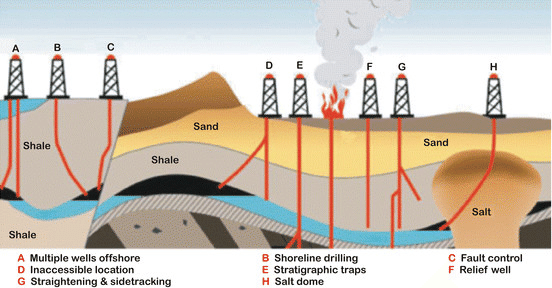Directional drilling has revolutionized various industries by offering a flexible and efficient method for underground construction and resource extraction. This technique involves drilling non-vertical wells, allowing for greater precision and access to hard-to-reach areas. For those seeking specialized services in this field, directional drilling provides a comprehensive solution to meet diverse project needs. This article explores the wide range of applications for directional drilling and its transformative impact on different sectors.
Oil and Gas Industry
The oil and gas industry is the most prominent user of directional drilling. This technique allows for the efficient extraction of hydrocarbons from deep underground reservoirs. By drilling horizontally or at an angle, operators can access multiple oil and gas deposits from a single vertical well, significantly increasing production rates and reducing the environmental footprint. Directional drilling also enables the development of offshore oil fields, where wells can be drilled from a single platform to reach various subsea targets.
Utility Installation
Directional drilling is widely used for installing underground utilities such as water pipes, gas lines, and electrical conduits. This method minimizes surface disruption, making it ideal for urban environments where traditional trenching would be impractical or costly. By drilling beneath roads, buildings, and other obstacles, utilities can be installed with minimal impact on the surrounding infrastructure and environment. This efficiency reduces the overall cost and time required for utility projects.
Telecommunications
The telecommunications industry benefits greatly from directional drilling for laying fiber optic cables and other communication lines. As the demand for high-speed internet and advanced communication networks grows, the need for efficient cable installation methods becomes critical. Directional drilling allows for the rapid and unobtrusive installation of these lines, ensuring reliable connectivity without disrupting existing services or landscapes.
Environmental Applications
Environmental projects often utilize directional drilling for various purposes, including soil and groundwater remediation. By drilling precise pathways, remediation agents can be delivered directly to contaminated sites, enhancing the effectiveness of cleanup efforts. Additionally, directional drilling is used for installing monitoring wells and collecting soil samples, providing valuable data for environmental assessments and ensuring regulatory compliance.
Renewable Energy Sector
The renewable energy sector leverages directional drilling for the installation of geothermal systems. Geothermal energy harnesses heat from the Earth’s core to generate electricity and provide heating solutions. Directional drilling enables the precise placement of geothermal wells, maximizing the efficiency and output of these systems. This technology plays a crucial role in advancing sustainable energy solutions and reducing reliance on fossil fuels.
Infrastructure and Construction
In the construction industry, directional drilling is employed for various infrastructure projects. It is used to install foundations, anchor tiebacks, and soil nails, providing structural support for buildings, bridges, and retaining walls. This method offers increased stability and load-bearing capacity, ensuring the longevity and safety of infrastructure. Directional drilling is also used for creating tunnels and underground passages, facilitating transportation and utility networks.
Water Management
Effective water management is essential for urban planning and agriculture. Directional drilling helps in installing irrigation systems, drainage pipes, and stormwater management systems. By directing water flow precisely, these installations optimize water usage, reduce flooding risks, and support sustainable agriculture practices. This technology ensures that water resources are managed efficiently, contributing to environmental conservation and resilience.
Mining Industry
The mining industry utilizes directional drilling for exploration and resource extraction. By drilling at various angles, mining companies can locate and extract valuable minerals and ores with greater precision and less environmental impact. This technique enhances the efficiency of mining operations, reduces waste, and minimizes the disturbance to surrounding ecosystems. Directional drilling also supports the development of underground mines, allowing for safer and more productive extraction processes.
Emergency and Disaster Response
In emergency and disaster response scenarios, directional drilling provides critical support for restoring services and infrastructure. It is used to repair damaged utility lines, install temporary communication systems, and address environmental hazards. This rapid and efficient method ensures that essential services are restored quickly, aiding in recovery efforts and minimizing the impact of disasters on affected communities.
Conclusion
Directional drilling offers a versatile and efficient solution for a wide range of applications across various industries. From the oil and gas sector to environmental projects, renewable energy, and infrastructure development, this technology has transformed how we approach underground construction and resource extraction. For specialized services, directional drilling provides the expertise and equipment needed to tackle complex projects with precision and minimal disruption. By harnessing the power of directional drilling, industries can achieve their goals while promoting sustainability and innovation.

